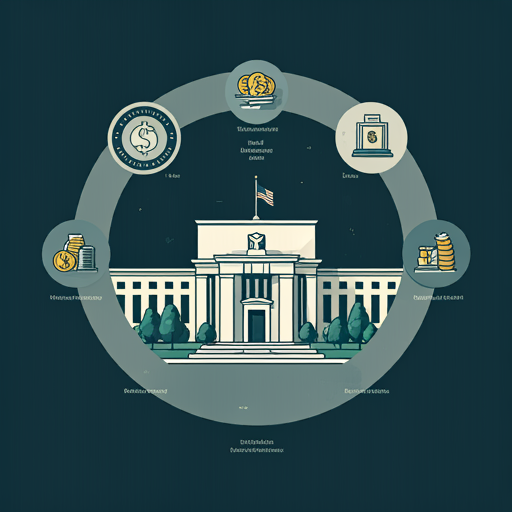Introduction to the Federal Reserve’s Role
Understanding the Federal Reserve System
The Federal Reserve serves as the central bank of the United States, playing a crucial role in the nation’s monetary policy. It regulates the money supply and aims to maintain economic stability. This institution influences interest rates, which in turn affect borrowing and spending. Understanding its mechanisms is essential for grasping broader economic trends. Monetary policy decisions can lead to significant market fluctuations. These fluctuations can impact various sectors, including cryptocurrencies. The Fed’s actions are closely monitored by investors. Knowledge is power in finance.
The Importance of Monetary Policy
Monetary policy is vital for economic health, as it directly influences inflation and employment rates. By adjusting interest rates, the Federal Reserve can stimulate or cool down the economy. This control helps maintain price stability, which is essential for consumer confidence. A stable economy fosters investment funds and growth. Investors closely watch these policy changes. Knowledge is crucial for making informed decisionq. Understanding these dynamics can enhance financial literacy. It’s important to stay updated on economic indicators.
Key Components of Monetary Policy
Interest Rates and Their Impact
Interest rates are a fundamental component of monetary policy, significantly influencing economic activity. When the Federal Reserve raises rates, borrowing costs increase. This often leads to reduced consumer spending and investment. Consequently, economic growth may slow down. Conversely, lower interest rates can stimulate the economy. They encourage borrowing and spending, which can boost demand. Understanding these dynamics is essential for investors. Knowledge empowers better financial decisions. Monitoring interest rate trends is crucial for strategic planning.
Open Market Operations Explained
Open market operations are a key tool used by the Federal Reserve to regulate the money supply. This process involves the buying and selling of government securities. By purchasing securities, the Fed injects liquidity into the economy. This action lowers interest rates and encourages borrowing. Conversely, selling securities withdraws liquidity, raising interest rates.
The main objectives include:
These operations directly influence economic conditions. Understanding them is crucial for financial planning. Knowledge leads to better investment strategies.
Recent Monetary Policy Decisions
Analysis of Recent Rate Changes
Recent rate changes by the Federal Reserve have significant implications for the economy. The latest adjustments aimed to combat rising inflation. Higher rates typically reduce consumer spending and borrowing. This can slow economic growth. However, the Fed’s decisions also reflect a response to labor market conditions. A tight labor market can lead to wage inflation. Knowledge is key in financial markets.
Quantitative Easing and Tightening
Quantitative easing involves the Federal Reserve purchasing securities to increase the money supply. This strategy aims to lower interest rates and stimulate economic activity. He believes that such measures can support growth during downturns. Conversely, quantitative tightening occurs when the Fed reduces its balance sheet. This process can lead to higher interest rates and decreased liquidity. He recognizes the potential risks of tightening too quickly. Understanding these policies is crucial for market participants. Knowledge fosters informed investment decisions.
The Federal Reserve’s Influence on Cryptocurrency
Market Reactions to Policy Announcements
Market reactions to Federal Reserve policy announcements can be swift and pronounced. He observes that changes in interest rates often lead to immediate fluctuations in asset prices. For instance, when rates are lowered, risk assets like cryptocurrencies may rally. Conversely, rate hikes can trigger sell-offs in these markets.
Key factors influencing reactions include:
He notes that cryptocurrency markets are particularly sensitive to these announcements. Understanding this relationship is essential for strategic investment. Knowledge is crucial for navigating volatility.
Correlation Between Fed Policies and Crypto Prices
The correlation between Federal Reserve policies and cryptocurrency prices is significant. When the Fed implements accommodative measures, liquidity increases in the market. This often leads to higher demand for risk assets, including cryptocurrencies. Conversely, tightening policies can result in decreased investment in these assets. He notes that market participants closely monitor Fed announcements. Understanding these dynamics is essential for informed trading. Knowledge can mitigate investment risks.
Future Outlook for Monetary Policy
Predictions for Interest Rate Trends
Predictions for interest rate trends suggest a cautious approach from the Federal Reserve. He anticipates that rates may remain elevated to combat inflation. This strategy aims to stabilize the economy while managing growth. However, external factors could influence these decisions. Geopolitical events and economic data will play critical roles. He believes that market volatility may increase during this period. Staying informed is essential for investors. Knowledge is power in uncertain times.
Potential Impacts on the Cryptocurrency Market
Potential impacts on the cryptocurrency market may arise from shifts in monetary policy. He notes that increased interest rates could lead to reduced liquidity. This reduction may dampen investor enthusiasm for riskier assets like cryptocurrencies. Conversely, if the Fed adopts a more accommodative stance, it could stimulate demand. He believes that market sentiment will remain volatile during these transitions. Understanding these dynamics is crucial for strategic investment. Knowledge can help navigate potential risks effectively.
Conclusion: Navigating the Intersection of Crypto and Monetary Policy
Strategies for Cryptocurrency Investors
Strategies for cryptocurrency investors should focus on market analysis and risk management. He emphasizes the importance of staying informed about monetary policy changes. These changes can significantly impact market dynamics. Diversifying investments can also mitigate potential losses. He suggests setting clear entry and exit points. This approach helps in making disciplined decisions. Knowledge is essential for successful trading. Understanding market trends is crucial for profitability.
The Importance of Staying Informed
The importance of staying informed cannot be overstated in the rapidly evolving cryptocurrency landscape. He recognizes that market conditions can change swiftly due to economic indicators and policy announcements. Timely information allows investors to make informed decisions. This proactive approach can mitigate risks associated with volatility. He believes that understanding macroeconomic trends is essential for strategic planning. Knowledge empowers investors to adapt to market shifts. Staying updated is crucial for long-term success.
